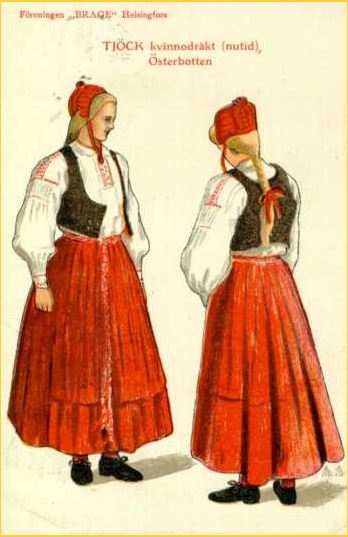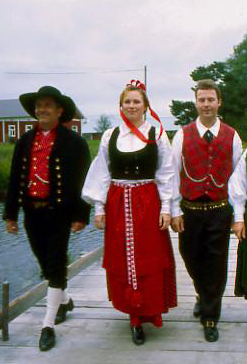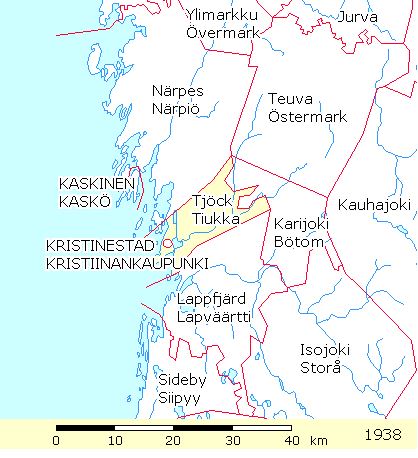Ostrobothnian
Tjöck
Parish History
The name Tjöck is recorded in history as far back as 1303 when Sweden’s King Birger Mangusson wrote his top official, Nils Andersson, that the farmers Michael de Lappafärd (Lappfjärd), Andar da Sastamal (Sastmola) and Tobbe de Tinka (Tjöck) should be able to work without difficulties with new cultivation of Tavastland (a historical province of Sweden). 5
- Tjöck was part of the Lappfjärd parish from 1594 – 1896
- Kristinestad, a city within Tjöck, was a part of Lappfjärd parish from 1649 – 1896.
- Kristinestad and Tjöck kept seperate church records for many years.
- Kristinestads stads- och landsforsämling translates to ‘the rural part of Kristinestads’ or Tjöck.
- Kristinenstad (including Tjöck) became an independent parish in 1897.
- In 1921 the parish name became Kristinestad – Tjöck församling 4,1
Parish Records
Parish Communion records are listed by farm name and because farm names often were used as a part of a person’s name, it is interesting to note the following farms.
The villages and farms of Tjöck were recorded in T.W. Karsten’s work, Svesk Bygd I Osterbotten: Nu Och Fordom. 2 Tjöck Parish Communion records were not used to confirm these findings.
To open a printable list of villages and farms (pdf), click here.
Villages & Farms
Rural areas and larger cities kept parish records separate. The focus of this article is on the rural area, known as Tjöck.
The two historic villages within Tjöck are: Påskmark and Tjöck.
- Yrjens
- Lillmals
- Stormala
- Kas
- Antfolk
- Bengs
- Eriks
- Pellfolk
- Grannas
- Äbbol
- Guss
- Erlands
- Kvis
- Äppel
- Hermans
- Ålme
- Hints
- Smeds
- Buts
- Lillant
- Raggnäs
- Tomasfolk
- Åback
- Surs
- Björs
- Hebblas
- Groop
- Nisslas
- Ingandt
Folk Dress
Each parish has a unique folk dress. Parish folk dress can be recognized by its style, colors and patterns.
Tjöck was part of the Lappfjärd parish until 1897 and as such they share the same folk dress. Women’s folk dress in Tjöck was available in five designs; party, grief, mourning, church and workwear. The costume was still used in the 1940’s by the older women. 5


References:
- Genealogical Society of Finland, HisKi project, Tjöck parish, http://hiski.genealogia.fi/hiski/a2k4rt
- Karsten T.W., Svesk Bygd I Osterbotten: Nu Och Fordom; Helingfors, 1923, pages 18 – 21
- Kristinestad churches; http://www.kristiinankaupunginseurakuntayhtyma.fi/info-ja-asiointi/the-churches-of-kristinestad
- Kristinestads Svenska Församling, svensk@evk.fi
- Tjöck; https://sv.wikipedia.org/wiki/Tjöck
- Tjöck folk dress: http://sydaby.eget.net/swe/drakt.htm
- Lappfjörd Tjöck folk dress, Brage costume agency, https://draktbyra.brage.fi/brage/folkdrakter/view-47835-9
- Ulrika Elenora; https://fi.wikipedia.org/wiki/Ulriika_Eleonoora_(vanhempi)
- Ulrika Eleonora church image and information, Kristinestad church; https://fi.wikipedia.org/wiki/Ulrika_Eleonoran_kirkko_(Kristiinankaupunki)



